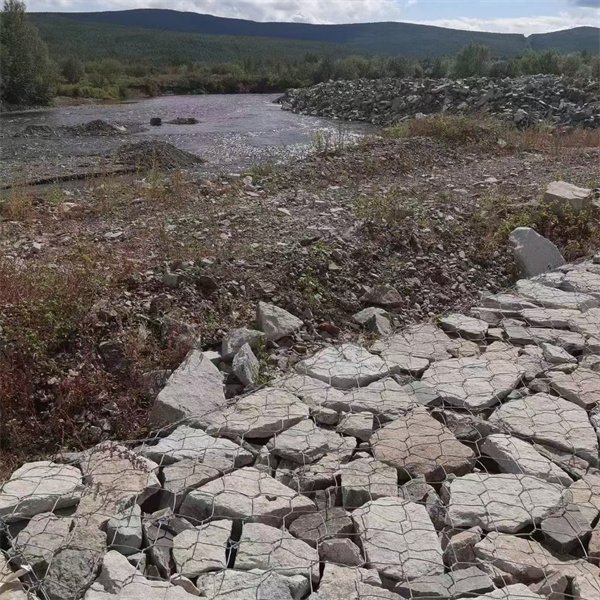តុលា . 16, 2024 14:05 Back to list
Choosing the Right Materials for Your Gabion Basket Projects
Understanding Gabion Basket Materials A Comprehensive Guide
Gabion baskets have become increasingly popular in various engineering and landscaping applications due to their versatility, durability, and aesthetic appeal. Essentially, gabion baskets are wire mesh containers filled with materials such as rocks, stones, or even recycled concrete. Their primary functions include providing erosion control, supporting retaining walls, and enhancing visual landscapes. An understanding of the materials used in gabion baskets is crucial for ensuring their effectiveness and longevity in various applications.
Primary Material Wire Mesh
The most critical component of any gabion basket is its wire mesh frame. The mesh is typically made from high-tensile steel wire, which is galvanized or coated to resist corrosion. The thickness of the wire and the size of the mesh openings can vary depending on the intended use and the load-bearing requirements. Galvanized steel wire is the most commonly used material as it offers excellent strength and durability, making it suitable for harsh environmental conditions.
In some applications, especially where aesthetics are a concern, PVC-coated wire mesh is utilized. The PVC coating not only adds an additional layer of protection against corrosion but also allows for a range of color options, which can enhance the visual appeal of the installed gabion structures. This is particularly useful in landscaping projects where the gabions are used as decorative features rather than merely functional elements.
Fill Material Rocks and Stones
The choice of fill material for gabion baskets significantly impacts their performance and visual appearance. Common fill materials include natural stones, rocks, and gravel. When selecting fill material, it is essential to consider factors such as size, shape, and weight. Large, angular stones are often preferred because they lock together more effectively, creating a stable structure that resists shifting during adverse weather conditions or seismic activity.
The size of the fill material typically ranges from 4 to 12 inches in diameter, with uniformity in size being beneficial for maintaining structural integrity. In some cases, recycled materials like crushed concrete or brick may be used as fill. Not only does this approach promote sustainability by reusing existing materials, but it also can often reduce project costs.
gabion basket material

Alternative Materials
While wire mesh and natural stone are the most commonly used materials, there are alternatives that some projects might consider. For instance, plastic gabions made from geotextile materials offer a lightweight and corrosion-resistant option. These are particularly useful in applications where weight is a significant concern, such as on steep slopes or in areas with poor soil stability.
Additionally, geogrid materials can be used in conjunction with traditional gabion baskets. These materials help reinforce the structure further, providing enhanced stability and improving the overall performance of the gabion systems in specific applications.
Environmental Considerations
One of the essential aspects of selecting materials for gabion baskets is their environmental impact. Using local stones and materials reduces transportation emissions and supports local economies. Furthermore, the permeable nature of gabion structures allows for water drainage, reducing the likelihood of erosion and water pooling on surfaces. This aspect makes gabions an environmentally friendly choice for erosion control and landscaping projects.
Conclusion
Gabion baskets are a dynamic solution for various landscaping and engineering challenges. By understanding the materials involved—from the robust wire mesh to the versatile fill options—designers and builders can create structures that not only address functional needs but also contribute to the beauty of the environment. The choice of materials should align with the specific project requirements, taking into account aspects like durability, aesthetics, and environmental sustainability. As demand for innovative and sustainable solutions grows, gabion baskets may continue to gain prominence in a wide array of applications.
-
Visualizing Gabion 3D Integration in Urban Landscapes with Rendering
NewsJul.23,2025
-
The Design and Sustainability of Gabion Wire Mesh Panels
NewsJul.23,2025
-
The Acoustic Performance of Gabion Sound Barriers in Urban Environments
NewsJul.23,2025
-
Mastering the Installation of Galvanized Gabion Structures
NewsJul.23,2025
-
Gabion Boxes: Pioneering Sustainable Infrastructure Across the Globe
NewsJul.23,2025
-
Custom PVC Coated Gabion Boxes for Aesthetic Excellence
NewsJul.23,2025
-
Installation Tips for Gabion Wire Baskets in Erosion Control Projects
NewsJul.21,2025






